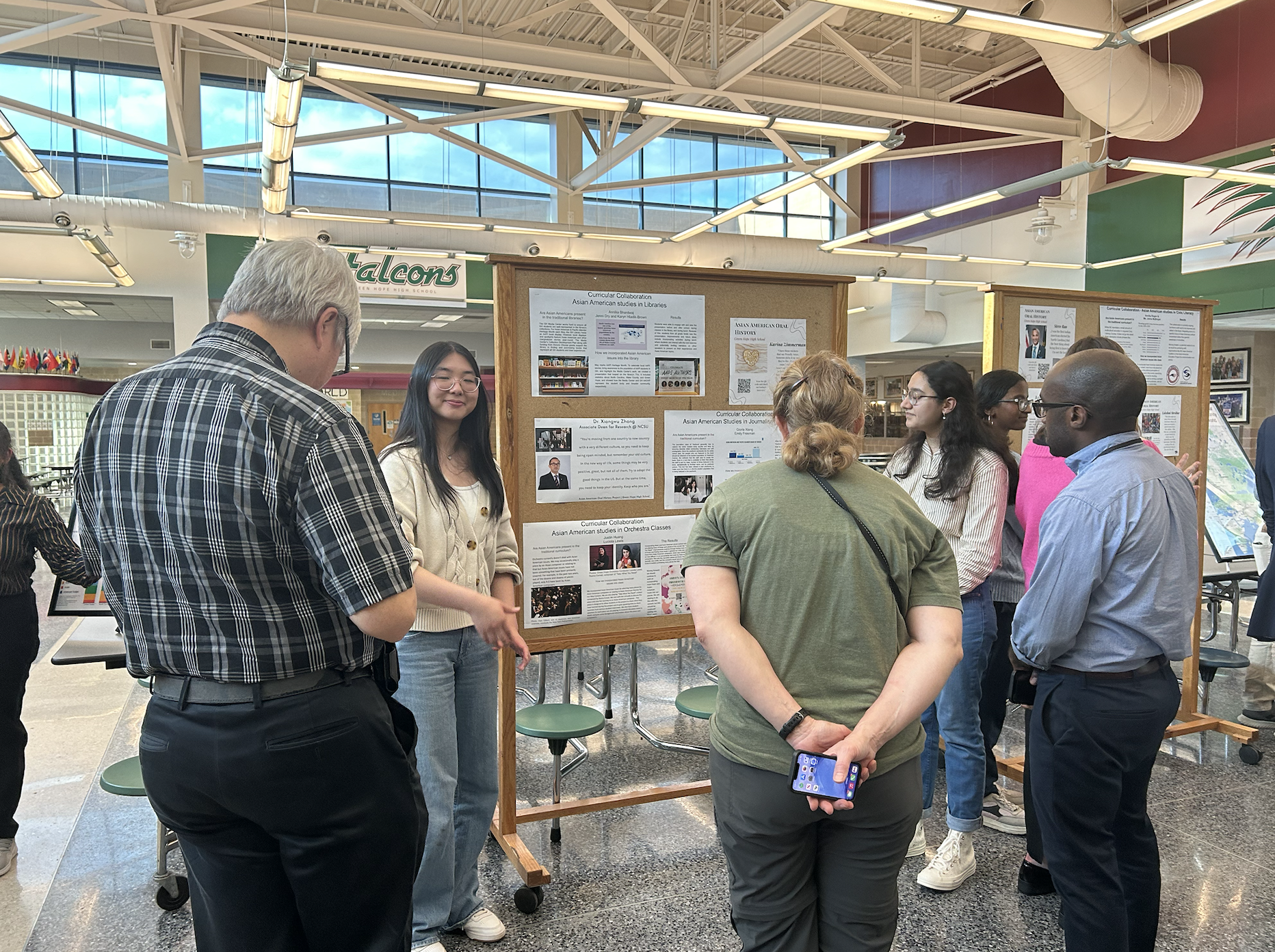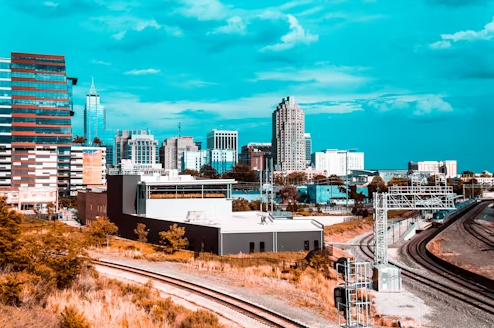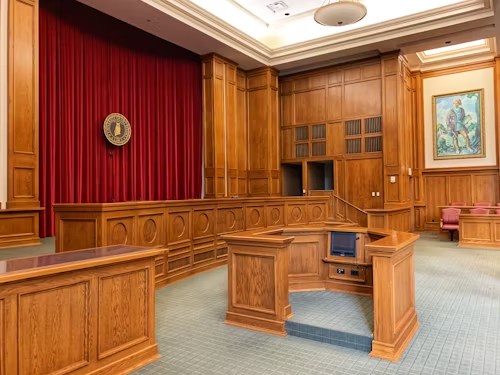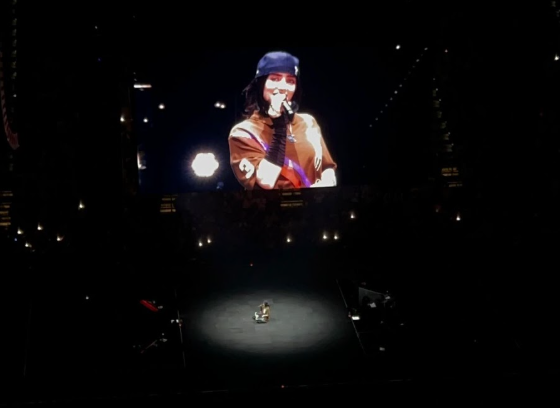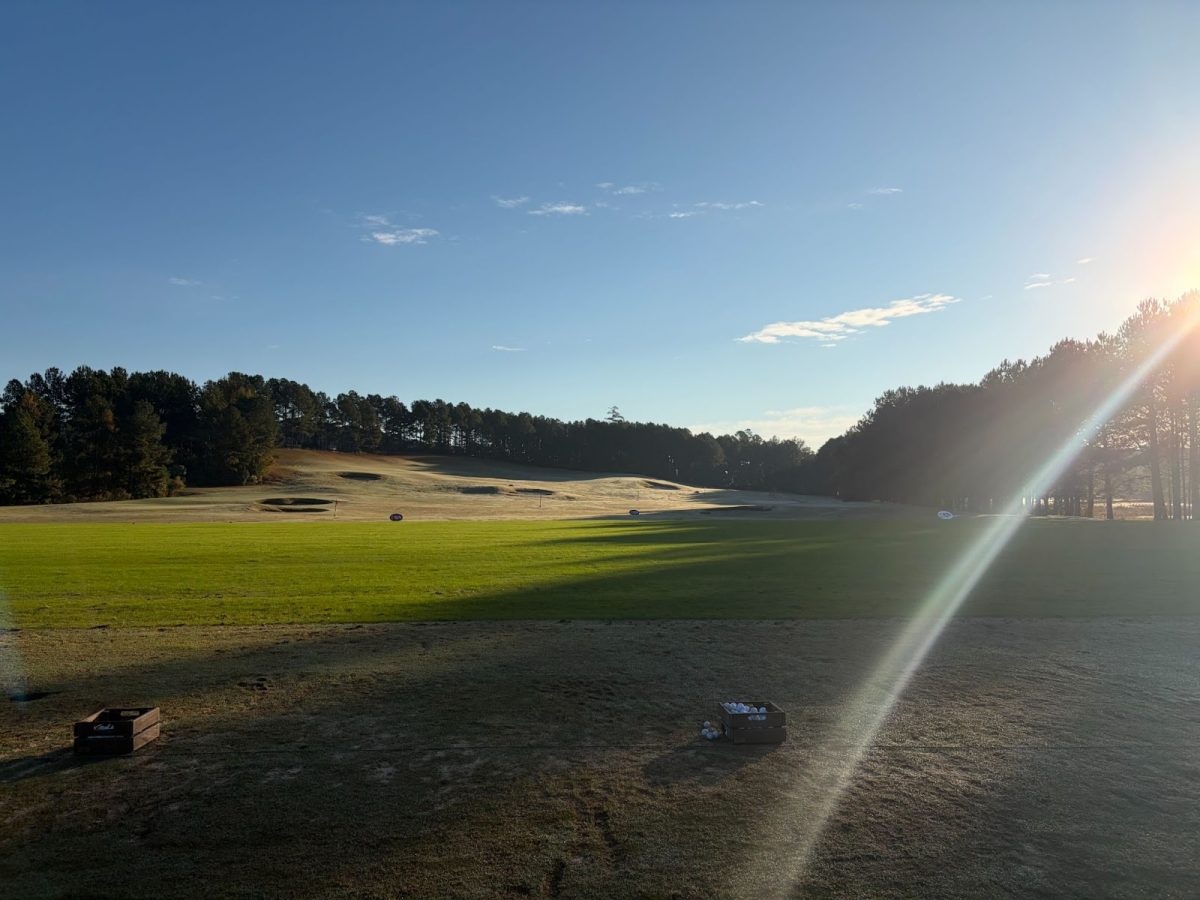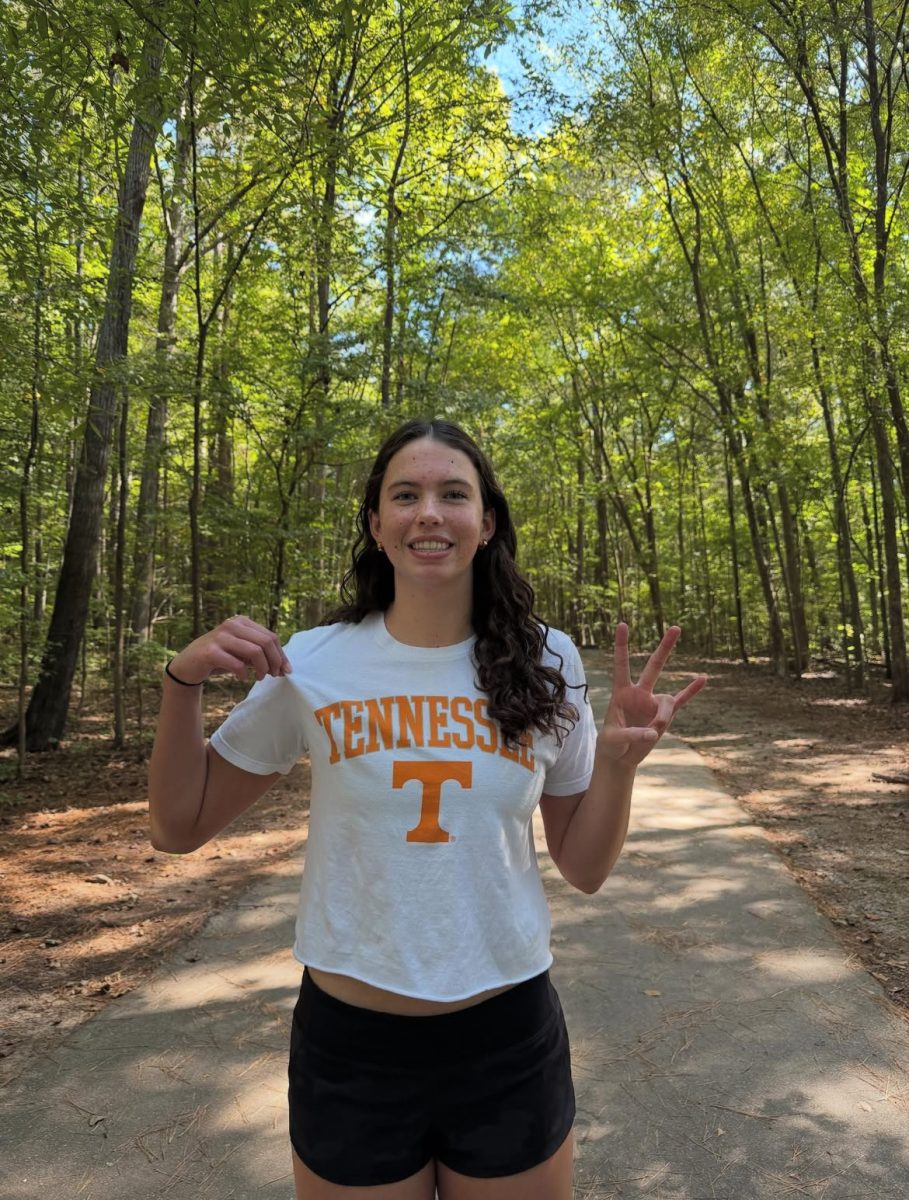Delicate vibratos and bassy hums filled the Green Hope auditorium on the evening of May 21, creating a symphony of melodic tunes that highlight a diversity of Asian American artists and their repertoire. Outside the theater, the smiling faces of various professors, news anchors and legislators filled the bulletin board galleries, as students share the stories of Asian Americans they interviewed.
The concert and gallery are a cumulation of the Asian American Oral History Project (AAOHP) and the Green Hope Orchestra program’s efforts in the past year – the evening commenced with an hour-long exhibit of the oral histories that the AAOHP collected in the past two semesters of work. Members Dianhao “Dan” Li (’25), Shruti Bommareddy (’24), Karuna Shanmugan (’26), Shruthi Prakash (’26), Anika Dinesh (’26) and Nandhini Thangaman (’26) also presented at the concert. More information on the initiative can be found on their website.
Participants in the project expressed their gratitude that countless members both in and outside of the Green Hope community attended the event in support of the AAOHP, including interviewee Keung Hui of the News and Observer. “It is a joy to see everyone’s hard work over the year pay off in this excellent exhibit,” said AAOHP advisor Mr. Colin Richardson.
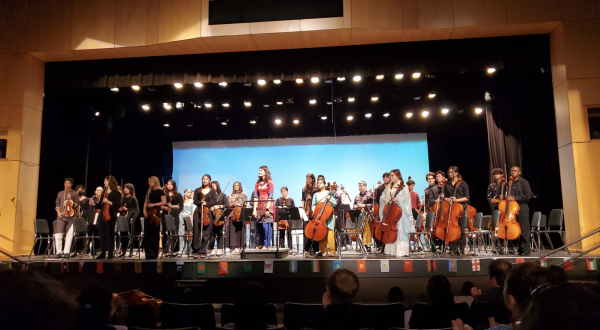
Member Annika Rogov (‘25) shared the importance of their project’s work. “One of the reasons we started because Mr. Richardson saw the official data come out for either this year last year, [and] almost 40% of the Green Hope population is Asian American. A lot of that is South Asian, which is not in any way covered by the textbooks we use in any classroom,” she said, explaining how the group searched through various textbooks to find references to Asian American history.
“[W]e looked through them digitally and the physical ones. There’s almost no mention [of Asian Americans]. [I]t was it was important to us to have that population reflected in the stuff we’re learning about. It’s really important for students to like see their own cultures and their education – not to mention multiculturalism is such a gift to anyone.”
Throughout the course of the year, several members presented ongoing “curriculum collaborations” in which they introduced Asian American perspectives into classes that don’t traditionally do so. Yearbook co-editor-in-chief Gloria Xiang collaborated with her yearbook class to teach a lesson on the lack of Asian American representation in media. These collaborations aren’t just limited to the humanities – Shruti Bommareddy (‘24) shared about Asian American representation in the medical field for her health science class.
The AAOHP is working to implement more extensive Asian American curriculum in Green Hope electives. The “Conversations in Diversity” class, a newly added selection, has major and minor assignments focused on introducing students to Asian American history. “The “Conversations in Diversity” class had a whole project centered around Asian American history in the United States and they already did that project, so ideally that stuff will continue into next year as well, but we’ve already seen some success,” said Rogov.
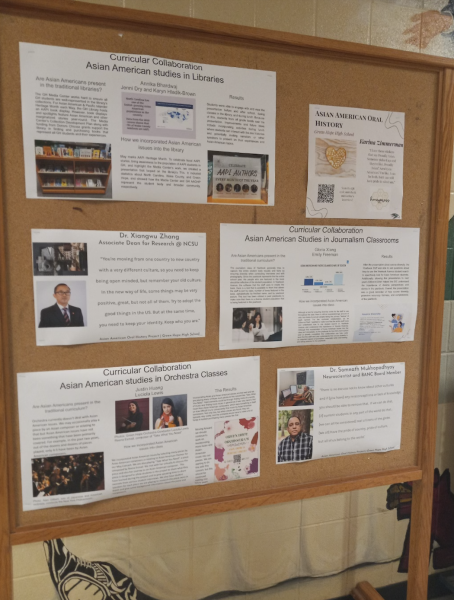
All members also collected oral histories from Asian American citizens across the country, and world. The AAOHP was able to leverage their connections to meet interviewees. “[We did] social networking. It can be easy to understate that, but we also do a lot of cold emailing, but it was impressive, and that wasn’t even all the data used,” she said.
Annika Rogov emphasized the importance of oral histories, as opposed to other mediums, like written interviews. “I love oral history because it’s so much different than a normal history lesson or book because it’s not a story that’s normally told. You don’t usually see an interview with an important person in the history book so much as you hear someone [else] tell their story,” she said. “It’s like a whole other experience; like the organization we’re working with – the Southern Oral History Project at UNC – you can just go to their archive and just listen to people talking from as far back as like decades – its insane, it really elevates the experience of learning throughout history and talk[ing] about it from a first-person perspective.”
The orchestra performed selections from Asian American composers including Yukiko Nishimura, Soon Hee Newbold and Han-Ki Kim, in addition to compositions from well-known media like Aladdin and My Neighbor Totoro. Orchestra performer and AAOHP member Justin Huang (‘24) shared the motivation behind focusing on Asian American artists throughout the concert. “The overarching theme was Asian American culture since we are collaborating with the AAOHP (which and I’m also in). In the AAOHP we had the goal of collaborating with a class to represent Asian Americans more in the curriculum, and since I collaborated with orchestra I talked to Mrs. Lewis about it and we decided to play some pieces that represented Asians and Asian Americans. This is demonstrated through the concert repertoire because we are playing pieces from a variety of cultures and composers,” Huang said.
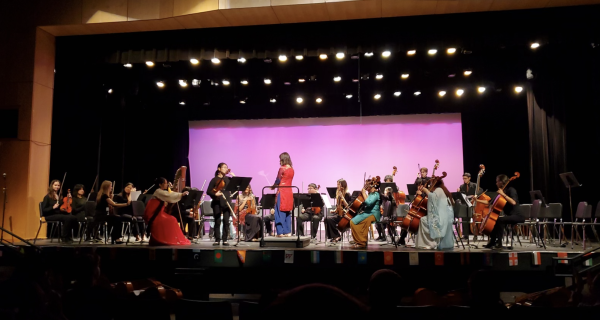
Rogov commented on the overall atmosphere that the concert cultivated, describing it as an uplifting experience. “I would say there was a large theme of general joyfulness – there were some that were a little bit more minor key [and] not as upbeat [or] happy, but it wasn’t necessarily a specific theme.”
Just as the Asian American community encompasses a diverse representation of nationalities, the concert repertoire attempted to emulate a similar diversity in the music played. “We selected the pieces at the concert by looking at Asian and Asian American composers and trying to represent them through our pieces. There was not any one artist that we wanted to include specifically but it was more representing of more Asian and Asian American composers as a whole,” Huang said.
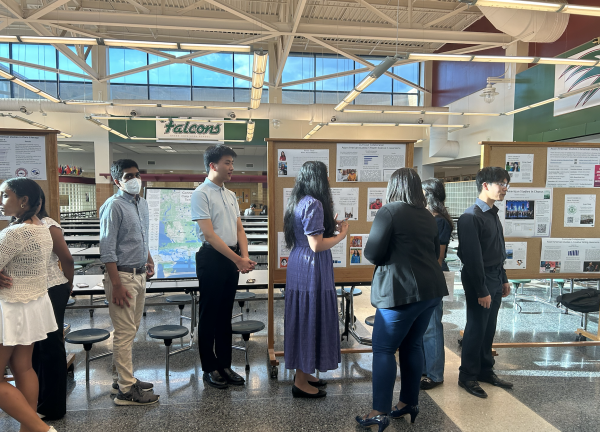
The concert provided more than an enriching musical experience to attendees: it also sparked necessary dialogue and broadened perspectives in regard to the art that the Green Hope community isn’t accustomed to experiencing. “I think it’s important to celebrate composers from a variety of backgrounds because it gives insight into different cultures and perspectives and how different people live. It leads to a better understanding of other people and an enriched perspective of life,” Huang said.
“I think that introducing music that the Green Hope community may not have previously heard will let them experience a new culture and learn about more cultural perspectives than just their own. I think this is also nice considering how much of the Green Hope population is Asian or has partly Asian roots so it is nice to bring some more exposure to this.”
In the coming weeks, the AAOHP aims to further its goals and potentially expand their initiative to local schools. “I know that a lot of us [in the AAOHP] would like to push this forward, expand more and maybe in schools, or even just expanding more on this specific topic, Asian American oral history. [Either way] we would love to go forward with it,” said Rogov.


